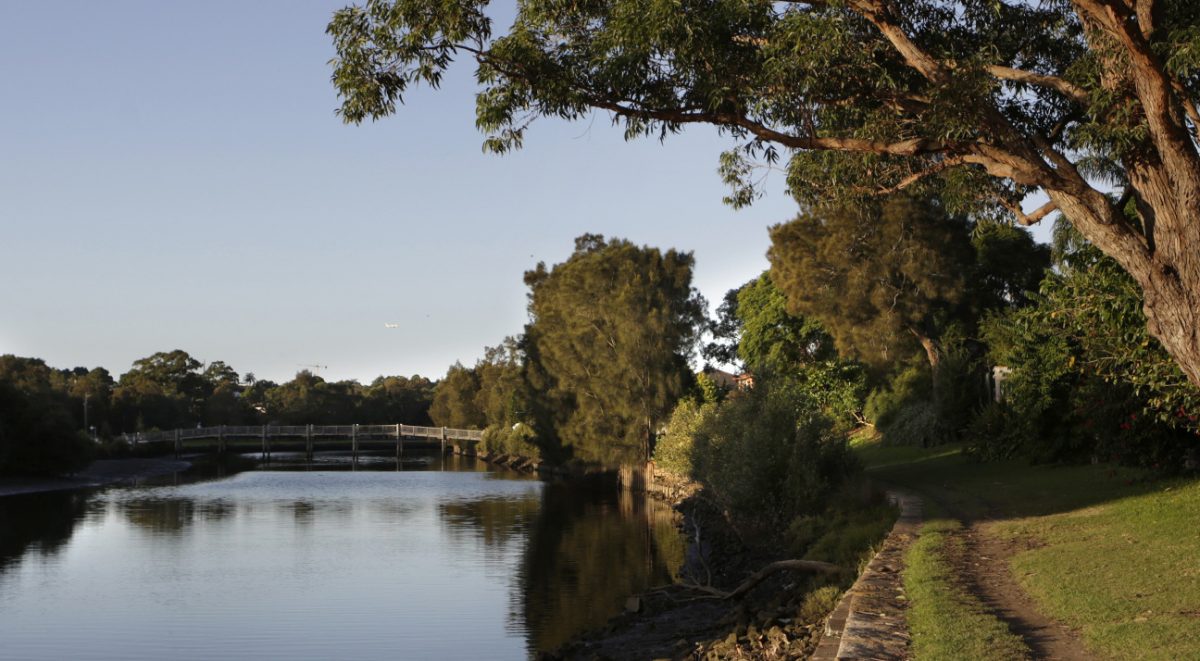Cooks River

Nestled within the vibrant tapestry of Sydney’s urban landscape lies the Cooks River, a waterway steeped in history, culture, and tradition. For centuries, this iconic river has been a vital lifeline, serving as a source of sustenance, transportation, and spiritual connection for indigenous peoples, European settlers, and diverse communities. The river’s main tributaries are Coxs Creek and Wolli Creek. Today, the Cooks River continues to hold immense cultural significance, serving as a gathering place, a symbol of identity, and a reflection of the rich multicultural heritage of the region. In this comprehensive exploration, we delve into the multifaceted layers of cultural importance that define the Cooks River, celebrating its legacy and the diverse communities that call its banks home.
I. Indigenous Heritage: Sacred Waters and Traditional Custodians
At the heart of the Cooks River’s cultural significance lies its deep-rooted connection to indigenous peoples, who have inhabited the land for thousands of years. For the Gadigal and Wangal Aboriginal tribes, the river served as more than just a waterway—it was a sacred pathway, a source of sustenance, and a gathering place for cultural ceremonies and rituals. Dreamtime stories and oral traditions passed down through generations pay homage to the spiritual significance of the river, honoring its role as a custodian of cultural identity and heritage.
II. European Settlement and Colonial Legacy: Shaping Cultural Landscapes
With the arrival of European settlers in the late 18th century, the cultural landscape of the Cooks River underwent profound transformations, as colonial encounters and settlement patterns left lasting imprints on the region. European exploration, land grants, and agricultural endeavors introduced new cultural practices and traditions, reshaping the relationship between humans and the natural environment. Landmarks such as the Cooks Road and historical sites like the Canterbury Estate bear witness to this colonial legacy, serving as reminders of the cultural exchanges and conflicts that shaped the river’s history.
III. Multicultural Communities: A Tapestry of Diversity and Inclusion
Throughout the 20th century and into the present day, the Cooks River has emerged as a melting pot of cultures, traditions, and identities, reflecting the diverse demographics of modern-day Sydney. Waves of immigration from Europe, Asia, and the Pacific Islands have brought a kaleidoscope of languages, cuisines, and customs to the region, enriching its cultural fabric and fostering a sense of community and belonging. Greek, Chinese, Lebanese, and Vietnamese communities, among others, have established vibrant cultural enclaves along the riverbanks, contributing to its vibrant and cosmopolitan character.
IV. Cultural Celebrations and Festivals: Honoring Heritage and Diversity
Throughout the year, the Cooks River comes alive with a myriad of cultural celebrations, festivals, and events that pay homage to its rich heritage and diversity. From indigenous reconciliation ceremonies to multicultural food festivals and community art projects, these gatherings serve as platforms for storytelling, sharing traditions, and fostering intercultural dialogue. Events such as the Cooks River Day Festival and the Greek Glenti Festival celebrate the river’s role as a unifying force, bringing together people from all walks of life to celebrate their shared cultural heritage.
V. Environmental Stewardship and Cultural Connection: Preserving Tradition for Future Generations
In recent decades, efforts to protect and preserve the cultural significance of the Cooks River have been intertwined with broader environmental stewardship initiatives aimed at restoring its ecological health and vitality. Community-led projects such as the Cooks Alliance and the Mudcrabs Environmental Volunteer Program engage local residents and cultural groups in hands-on conservation activities, fostering a sense of ownership and responsibility for the river’s wellbeing. By reconnecting with the land and honoring traditional custodianship practices, these initiatives seek to ensure that the cultural importance of the Cooks endures for generations to come.
VI. Conclusion: Embracing Diversity, Honoring Heritage
As we reflect on the cultural significance of the Cooks River, we are reminded of its enduring legacy as a symbol of resilience, diversity, and inclusion. From its indigenous roots to its multicultural present, the river serves as a testament to the interconnectedness of cultures and the power of community in shaping our collective identity. By embracing our shared heritage and celebrating the cultural richness of the Cooks, we can forge a path towards a more inclusive and harmonious future, where cultural diversity is celebrated and cherished as a source of strength and vitality.
Know More about the Cooks River.
What are The Religious Places of the Cooks River?
When Did The Cooks River Basin Become a Focus?
Where is The Cooks River Located?
Who Were The Key Historical Figures and Civilizations of The Cooks River?
How to Reach Cooks River?




